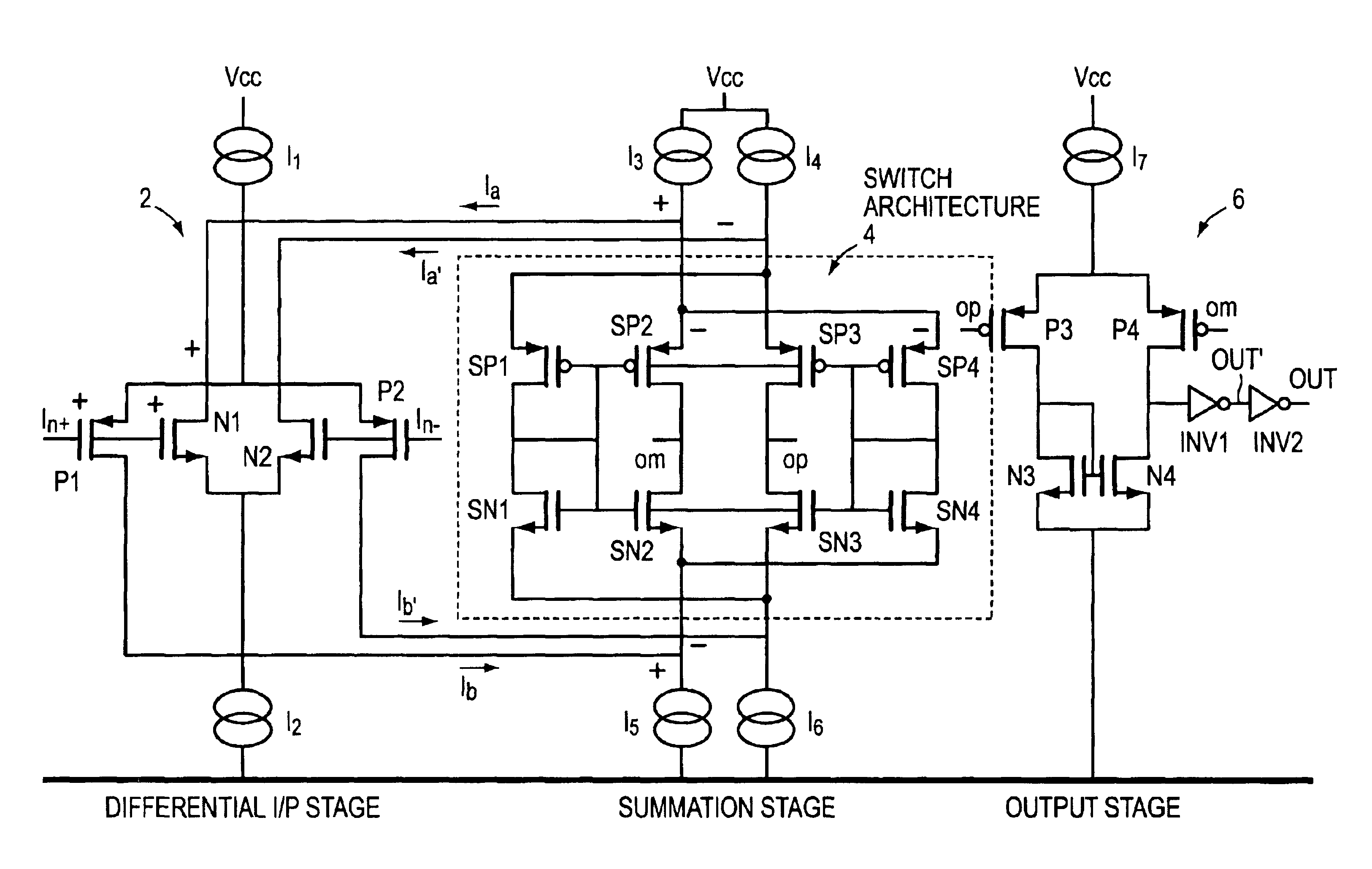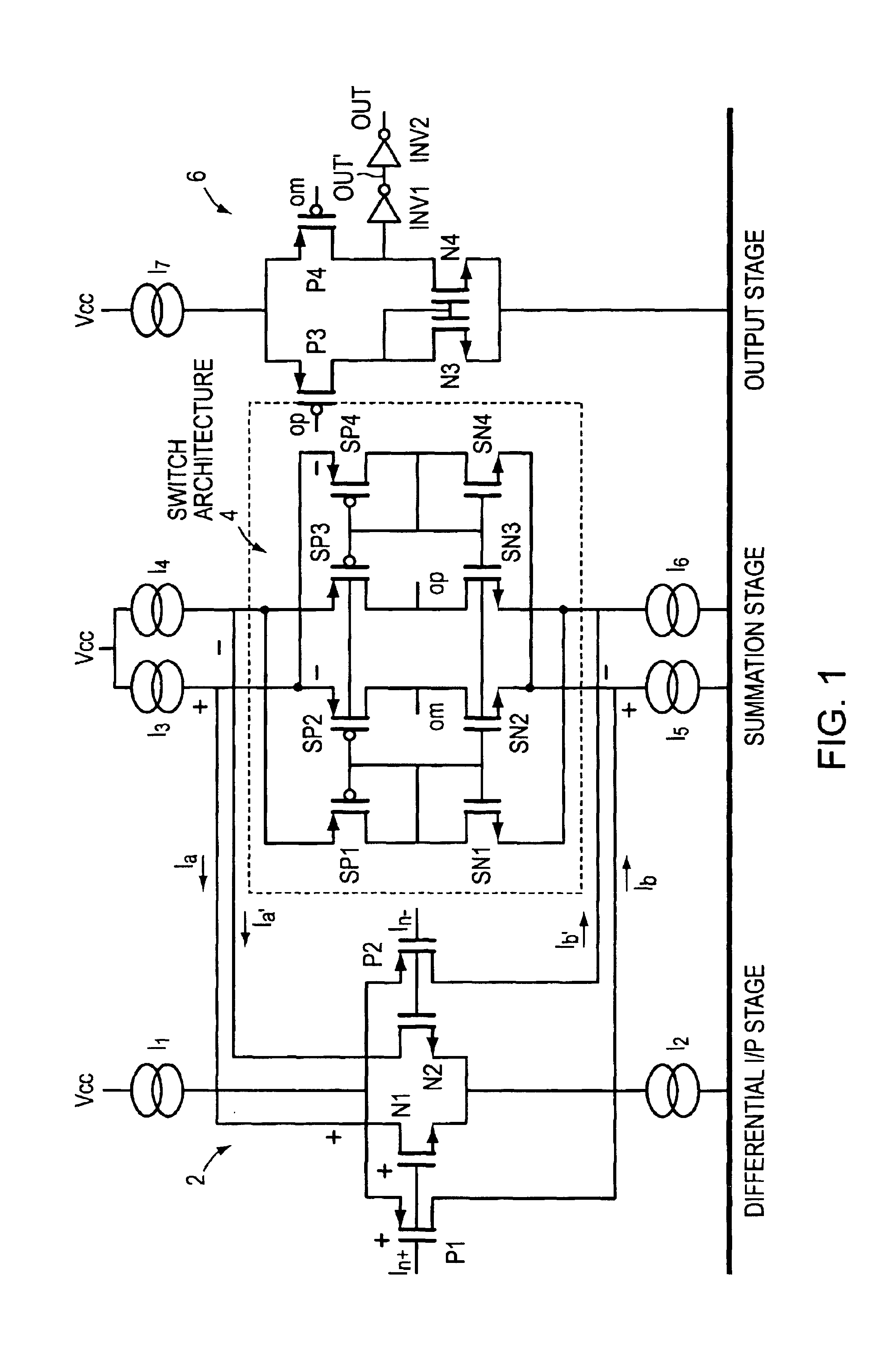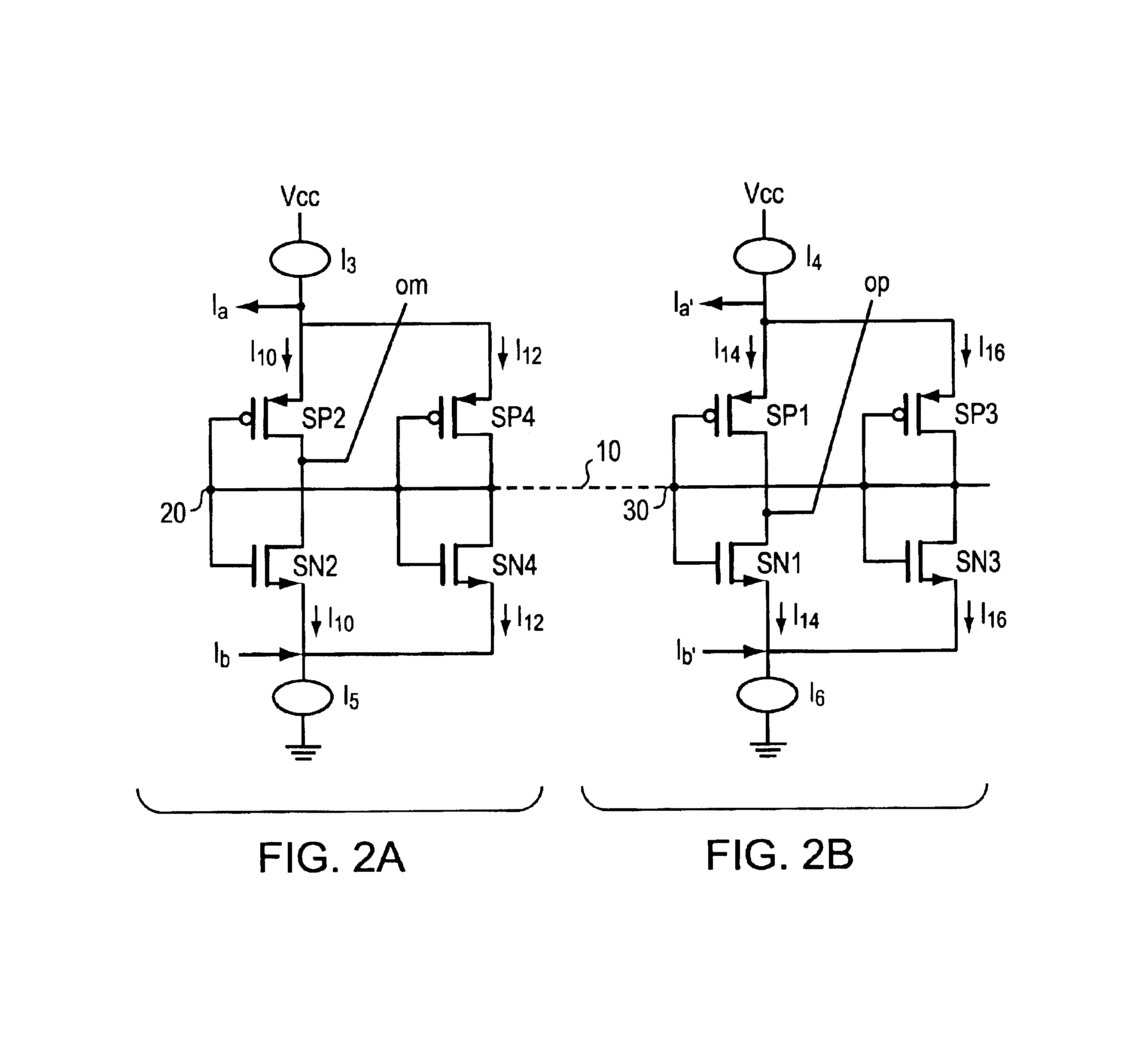Low voltage, low power differential receiver
a low-voltage, differential receiver technology, applied in the field of interface circuits, can solve the problems of increasing jitter and limiting the practical circuit to higher vcc levels, and achieve the effects of improving low vcc performance, reducing skew and jitter, and reducing output voltag
- Summary
- Abstract
- Description
- Claims
- Application Information
AI Technical Summary
Benefits of technology
Problems solved by technology
Method used
Image
Examples
Embodiment Construction
[0022]EMBODIMENT FIG. 1 shows a folded cascode circuit with a differential input stage 2 comprised is of source coupled NMOS transistors, N1 and N2, with a current source I2 connecting the sources to ground. There is a parallel set of PMOS transistors, P1 and P2, sharing a current source I1 connecting their sources to the power rail, Vcc. I1 and I2 are complementary current sources, typically of equal value. The value may range widely from microamps to milliamps or more depending on applications. In one preferred embodiment 0.350 milliamps is used. The gates of N1 and P1 are connected together and to an input signal, In+, and the gates of N2 and P2 are similarly connected together and to the complementary input signal, In−. Each of the drains of the input stage NMOS and PMOS transistors are connected, in a folded cascode fashion, to sources of opposite polarity transistors in the load or current summation stage 4. Folded cascode circuits have the beneficial characteristic of a diffe...
PUM
 Login to View More
Login to View More Abstract
Description
Claims
Application Information
 Login to View More
Login to View More - R&D
- Intellectual Property
- Life Sciences
- Materials
- Tech Scout
- Unparalleled Data Quality
- Higher Quality Content
- 60% Fewer Hallucinations
Browse by: Latest US Patents, China's latest patents, Technical Efficacy Thesaurus, Application Domain, Technology Topic, Popular Technical Reports.
© 2025 PatSnap. All rights reserved.Legal|Privacy policy|Modern Slavery Act Transparency Statement|Sitemap|About US| Contact US: help@patsnap.com



